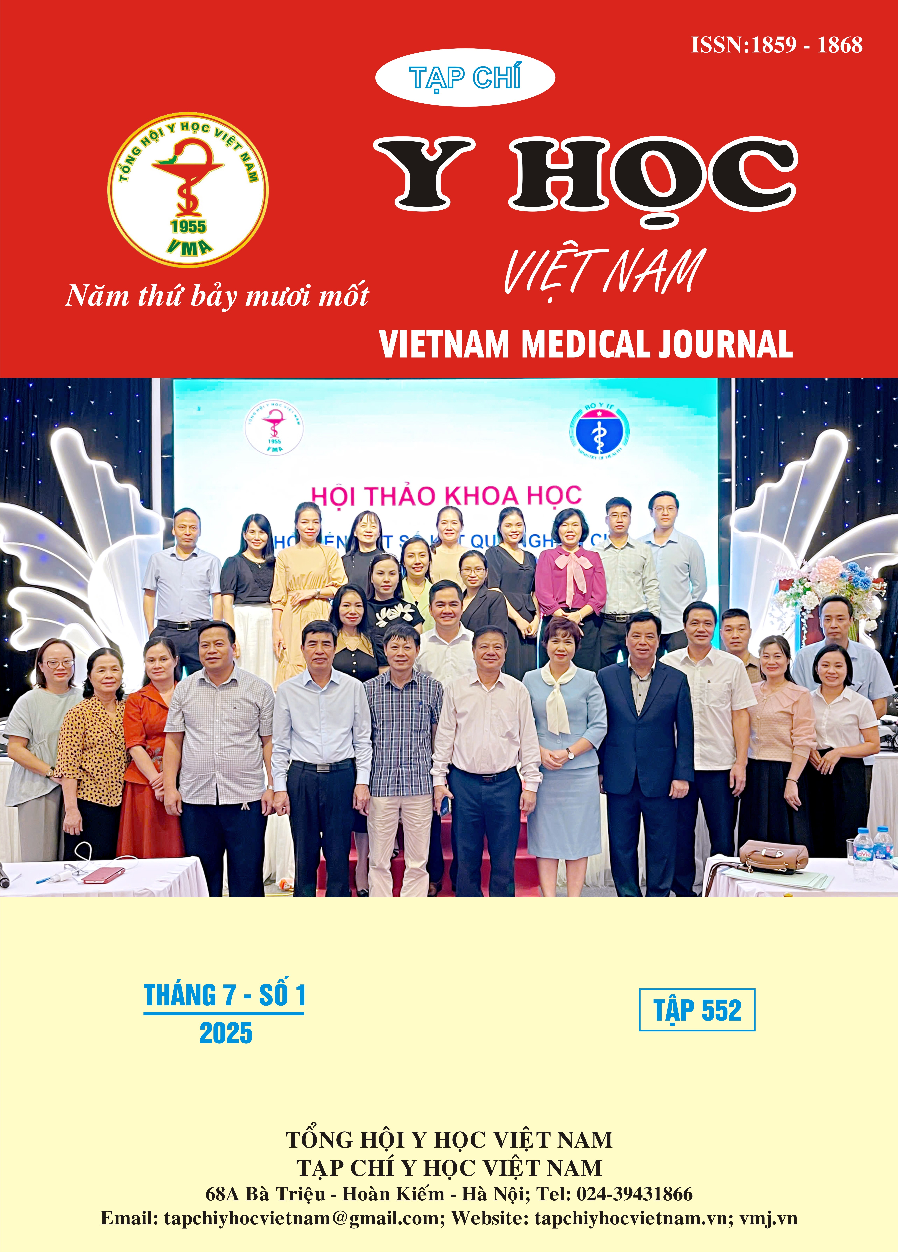A STUDY ON SERUM GALECTIN-3 LEVELS AND THEIR ASSOCIATION WITH CORONARY ARTERY LESIONS IN PATIENTS WITH ACUTE CORONARY SYNDROME
Main Article Content
Abstract
Background: Galectin-3 is a biomarker involved in inflammatory and fibrotic processes in cardiovascular disease. Identifying its association with coronary artery lesions may help improve risk stratification in patients with acute coronary syndrome (ACS). Objectives: To investigate serum galectin-3 levels and their relationship with the characteristics of coronary artery lesions in patients with ACS. Methods: A cross-sectional descriptive study was conducted on 64 patients with ACS at Hoan My Cuu Long General Hospital from May 2024 to February 2025. Clinical data included age, sex, cardiovascular risk factors, coronary angiographic findings, and serum Galectin-3 levels measured at admission. Data were analyzed using SPSS 26.0 with statistical significance set at p < 0.05. Results: The mean age of patients was 69.6 ± 9.8 years; 74.2% were aged ≥65 years and 69.4% were female. Hypertension was present in 98.4%, dyslipidemia in 85.5%, diabetes mellitus in 33.9%, and prior coronary artery disease in 80.6%. Coronary artery lesions were most found in two-vessel (45.2%) and three-vessel (19.4%) involvement. Moderate to severe stenosis accounted for 80.7%. TIMI flow grade was predominantly 2 (58.1%) and 3 (22.6%). The mean serum galectin-3 level was 20.01 ± 7.43 ng/mL (range: 10.60–45.70). Galectin-3 levels significantly increased with the number of affected coronary vessels (p < 0.001), but no significant differences were found based on stenosis severity or TIMI flow. Conclusion: Serum galectin-3 levels are associated with the number of affected coronary artery in ACS patients, suggesting its potential role as a biomarker for risk assessment and early intervention planning.
Article Details
Keywords
Galectin-3, acute coronary syndrome, coronary artery disease
References
2. Li M., Guo K., Huang X., Feng L., Yuan Y., et al. Association between serum galectin-3 levels and coronary stenosis severity in patients with coronary artery disease. Frontiers in Cardiovascular Medicine. 2022. 9818162. doi:https://doi.org/10.3389/fcvm.2022.818162.
3. Bộ Y tế (2019). Quyết định số 2187/QĐ-BYT về Hướng dẫn chẩn đoán và xử trí hội chứng mạch vành cấp, Bộ Y tế, ngày 03 tháng 06 năm 2019.
4. Hồ Văn Phước, Phạm Văn Hùng. Khảo sát tuổi động mạch ở bệnh nhân bị hội chứng vành cấp tại Bệnh viện Đà Nẵng. Tạp chí Tim mạch học Việt Nam. 2014. (68), 234-240.
5. Võ Thị Cẩm Loan, Trần Viết An. Nghiên cứu đặc điểm hình ảnh tổn thương động mạch vành ở bệnh nhân hội chứng vành cấp tại Bệnh viện Đa khoa Trung ương Cần Thơ. Thư viện số Trường Đại học Đà Lạt. 2019. 20
6. Bošnjak Ivica, Bedeković Dražen, Selthofer-Relatić Kristina, Roguljić Hrvoje, Mihaljević Ivica, et al. Role of galectin-3 in diagnosis and severity assessment of epicardial artery lesions in patients with suspected coronary artery disease. BMC Cardiovascular Disorders. 2023. 23(1), 268. doi:10.1186/s12872-023-03310-y.
7. van der Velde A. R., Lexis C. P., Meijers W. C., van der Horst I. C., Lipsic E., et al. Galectin-3 and sST2 in prediction of left ventricular ejection fraction after myocardial infarction. Clin Chim Acta. 2016. 45250-7. doi:10.1016/j.cca.2015.10.034.
8. Soltan G., Samy N., Mashal A. Galectin 3 Level in Patients with Acute Coronary Syndrome and its Relation to Severity of Coronary Artery Disease. World Journal of Cardiovascular Diseases. 2020. 10784-795. doi:https://doi.org/10.4236/wjcd. 2020.1012075.
9. Li X., Qiu Q., Tong Q., Wang Y., Yu H., et al. Value of galectin-3 in the diagnosis of acute coronary syndrome and the assessment of coronary artery lesions. Biomark Med. 2021. 15(9), 647-657. doi:10.2217/bmm-2020-0610.
10. Halimah Halimah, Lopa Amaliyah Tahir, Rauf Darmawati. The Galectin-3 Comparison in NSTEMI and STEMI Patients at Dr. Wahidin Sudirohusodo Hospital. Indonesian Journal of Clinical Pathology and Medical Laboratory. 2025. 31(2), 161-166.


